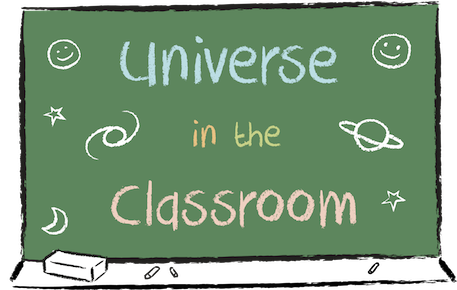While professional astronomers strive to further our understanding of the Universe, science communicators are doing an equally important job: sharing this new knowledge with the public. Astronomy communication is especially important for children, where the aim of highlighting exciting new discoveries is to inspire them to develop an interest in science and technology.
In this activity students will use Space Scoop, astronomy children’s news stories, as the basis for a creative writing and drawing activity that teaches them about the wonders of the cosmos, before they are invited use the LCOGT robotic telescopes to explore space themselves!
This activity was written by Sarah Reed
Learning Objectives
- Learn to identify and describe a range of astronomical objects,
- Become familiar with astronomy and science journalism and improve creative thinking and skill, literacy and teamwork skills.
Materials
- Pencils and paper for each student
- Multiple copies of several Space Scoop releases (available at www.spacescoop.org), or a few have been pre-selected:
- The Planet That Lost An Ocean
- Sibling Stars in a Crushing Hug
- Rosetta Makes Friends With a Comet
- Ghost of the Southern Skies
- Super Star Takes On Black Holes in Jet Contest
- Before It's Famous
- Lost and Found: The Milky Way's Missing Arms
- When it Rains it Pours on the Sun
Step-by-Step
1) Split the class into groups of four.
2) Print out a variety of different Space Scoop articles so that each group has a different story.

3) Distribute the articles so that the children only see the Space Scoop that their group is working on (each group member will work on the same article, while different groups will have a different story).
4) Ask the students to carefully read through the Space Scoop they have been handed.
5) When they have finished, ask all the children to close their eyes and imagine that they are in a spaceship and that they can see the astronomical object(s) or event mentioned in the Space Scoop.
6) Ask them to write a description of the object(s) or event in the form of an eyewitness account. Emphasise the need to use lots of adjectives.
7) Tell the children to swap their stories with someone from a different group. Then ask them to draw a picture of the astronomical object or event described by their classmate. The drawing must be based solely on the eyewitness account and not on the original Space Scoop.
8) Finally, ask the children to pair up with the person that they swapped their story with:
-
Are the drawings similar to what the storytellers had imagined the objects or event would look like when writing their eyewitness accounts (or if they are similar to the picture used in the Space Scoop)? If they are different, ask them to try to figure out why.
-
Could the storyteller have included more description to help the reader? Or is this astronomical object or event so strange and bizarre that there are many possible ideas for what it may look like, all of which are equally right? Do professional astronomers even know how it really looks?

